Betel chewing is prevalent among Southeast Asians and Indians. However, young people in Southeast Asia don’t use it much now, but plenty of others still do. The real name of betel nuts is called areca nuts as betel is actually the name of the leaf in which they're wrapped prior to chewing.
Betel chewing is a habit that unites Southeast Asia with the Indian sub-continent, parts of Southern China and the Western Pacific. Whereas alcohol was associated with feasting, betel was the everyday social lubricant. It was offered to visitors to one’s home. And just as the English developed elaborate tea sets, Indians and Southeast Asians developed elaborate betel nut sets.
Betel took on symbolic meaning too and was a central element of traditional marriage
ceremonies. Among Malays, betel or tepak sirih (betel leaf container) would be sent to the parents of a prospective bride, and if they accepted it, then it meant that they consented to the marriage.
In general, tepak sirih contains seven uniquely selected items such as betel nut, lime (kapur), extract from the leaves of gambier plant (gambir), tobacco, betel leaves and betel nut cutter / nutcracker (kacip). All of the items except kacip are kept in six different smaller containers known as cembul.
The betel leaves are arranged in a group of five to seven pieces folded together. All ingredients are placed accordingly and are not done haphazardly. There are precise sections of the tepak sirih that hold the ingredients.
The actual nut comes from the areca palm tree. Typically, it is sliced, mixed with lime and then wrapped up in a betel creeper leaf and chewed. The lime reacts with compounds in the nut to produce alkaloids which give a mild narcotic effect. At the same time, large amounts of red saliva are also produced which the chewers will then spit it out.
Pictures below are the betel nut paraphernalia from my collection.
 A complete set of Malay brass tepak sirih.
A complete set of Malay brass tepak sirih. Looking at the brass bowl, it can be separated from the betel tray set. Bowls such as these were used to hold betel sets, from which betel could be offered to visitors, and to hold food, such as fruits.
Looking at the brass bowl, it can be separated from the betel tray set. Bowls such as these were used to hold betel sets, from which betel could be offered to visitors, and to hold food, such as fruits.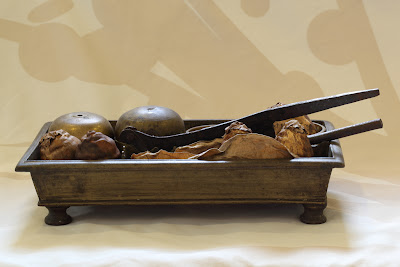 A complete set of Dayak brass tepak sirih with areca nuts and dried betel leafs.
A complete set of Dayak brass tepak sirih with areca nuts and dried betel leafs.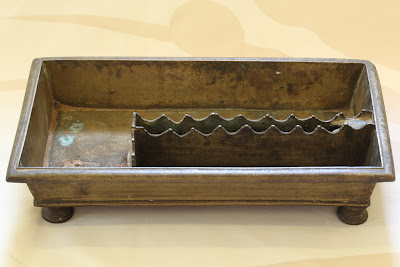 The brass tray.
The brass tray.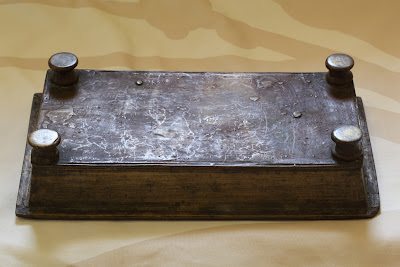 Bottom view of the brass tray.
Bottom view of the brass tray.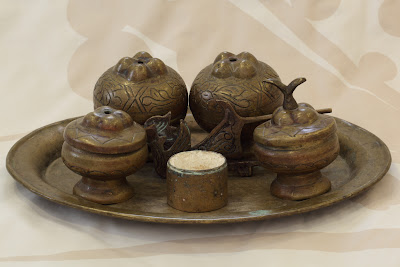 A complete set of Indonesian brass tepak sirih with mangoesteen fruit shapes.
A complete set of Indonesian brass tepak sirih with mangoesteen fruit shapes. The brass tray.
The brass tray. Bottom view of the brass tray.
Bottom view of the brass tray.And pictures below are another two complete sets of Malay brass tepak sirih in my collection. These two are almost as similar as the tepak sirih in the first picture above, only the two tepak sirih below (same size) are slightly smaller in size than the one in the first picture.
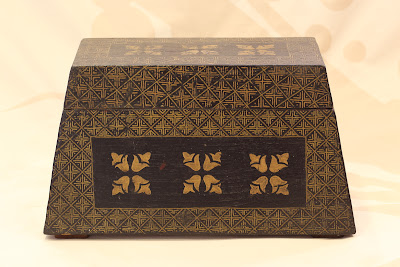 Wooden tepak sirih from Sarawak.
Wooden tepak sirih from Sarawak.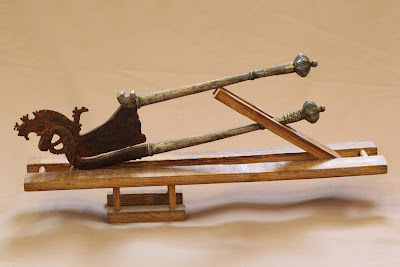 Betel nut cutter.
Betel nut cutter.
This Balinese Hindu style betel nut cutter is in the shape of a winged horse. The handles are in silver and the body is made of iron. An iron kacip (Balinese) in the shape of a magnificent horse, with its mane and body, picked out in gold. The body bears a decorative inlaid pattern of swastikas, also picked out in gold. The handles are sheathed in gilded metal.
An iron kacip (Balinese) in the shape of a magnificent horse, with its mane and body, picked out in gold. The body bears a decorative inlaid pattern of swastikas, also picked out in gold. The handles are sheathed in gilded metal.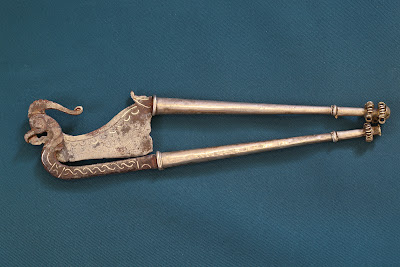 An iron kacip from Central of Java, with silver inlay in the form of a stylized bird. The handles are sheathed in silver.
An iron kacip from Central of Java, with silver inlay in the form of a stylized bird. The handles are sheathed in silver. An iron kacip in the Thai style from North of Kelantan, but highly stylized to conform with Islamic teaching. It is with lotus flower motifs on the eyes and hinges. The handles are partly sheathed in brass, also ending in a lotus bud shape.
An iron kacip in the Thai style from North of Kelantan, but highly stylized to conform with Islamic teaching. It is with lotus flower motifs on the eyes and hinges. The handles are partly sheathed in brass, also ending in a lotus bud shape.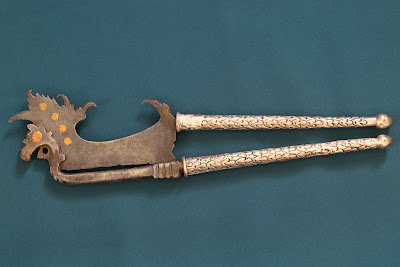 An iron kacip (Balinese) in the shape of a stylized winged horse, with inlaid
An iron kacip (Balinese) in the shape of a stylized winged horse, with inlaid
copper circles in its mane. The handles are sheathed in silver and embossed with a scaly motif.
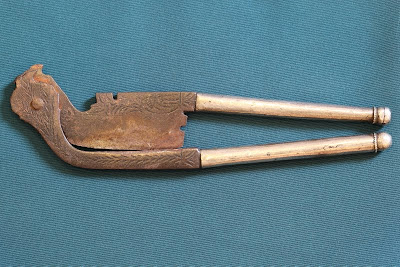 A very simple iron kacip with the head in the shape of a highly stylized bird. The handles are sheathed in plain silver.
A very simple iron kacip with the head in the shape of a highly stylized bird. The handles are sheathed in plain silver.
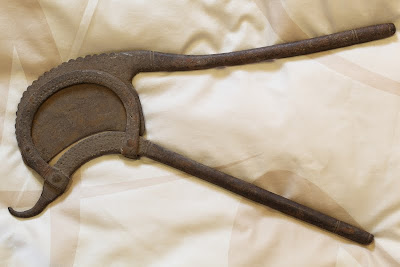 An extra large, ornate brass kacip from India.
An extra large, ornate brass kacip from India.
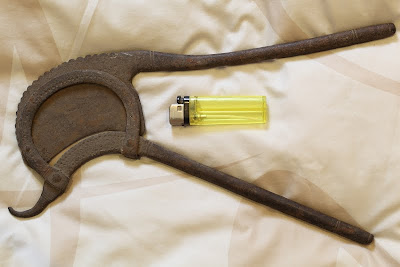 Showing the actual size of the kacip, with a regular lighter in between it.
Showing the actual size of the kacip, with a regular lighter in between it.
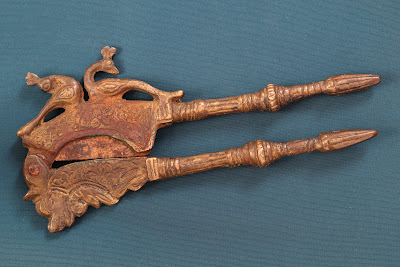 An Indian large, ornate brass kacip decorated with bird motifs.
An Indian large, ornate brass kacip decorated with bird motifs. Another Indian large, ornate brass kacip decorated with bird motif.
Another Indian large, ornate brass kacip decorated with bird motif.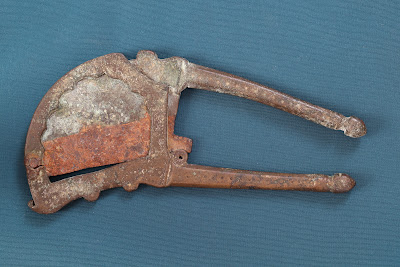 A large, ornate brass kacip from India.
A large, ornate brass kacip from India.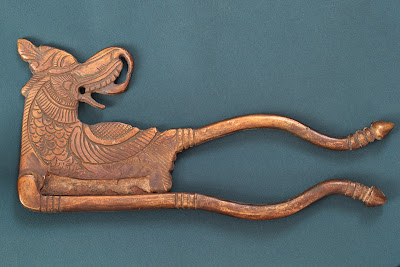 A brass kacip from India, in the shape of a mythical beast.
A brass kacip from India, in the shape of a mythical beast. A small, ornate brass kacip decorated with geometric patterns.
A small, ornate brass kacip decorated with geometric patterns.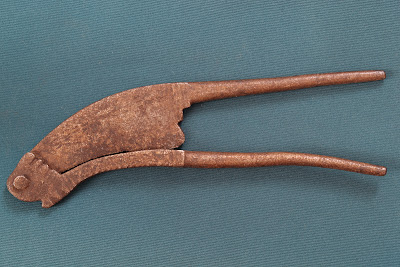 A very simple iron kacip, free from decoration.
A very simple iron kacip, free from decoration.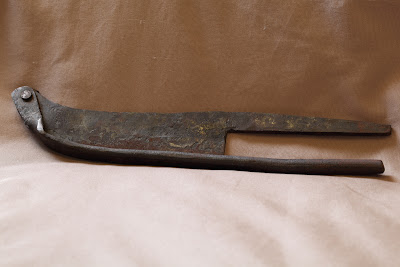 Iron betel nut cutter from Borneo.
Iron betel nut cutter from Borneo.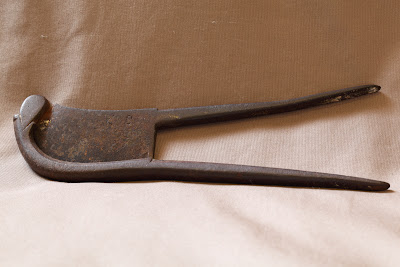 Malay iron betel nut cutter.
Malay iron betel nut cutter. Indian betel nut cutter in the shape of a bird.
Indian betel nut cutter in the shape of a bird. Malay betel nut cutter in the shape of a bird.
Malay betel nut cutter in the shape of a bird.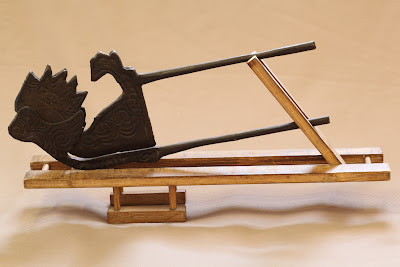 Malay betel nut cutter in the shape of a chicken.
Malay betel nut cutter in the shape of a chicken. Indonesian betel nut cutter in the shape of a bird.
Indonesian betel nut cutter in the shape of a bird. A modern brass kacip from India, free from any form of decoration.
A modern brass kacip from India, free from any form of decoration.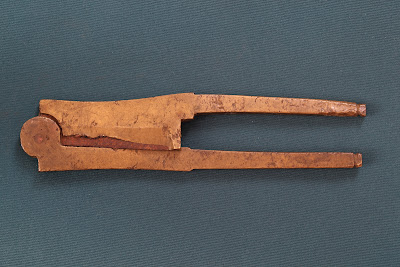 Another modern brass kacip from India, free from any form of decoration.
Another modern brass kacip from India, free from any form of decoration.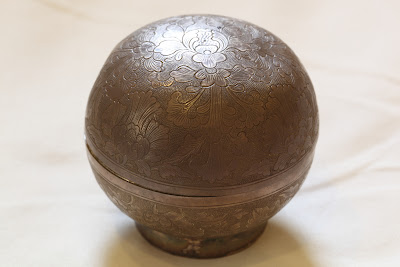 Silver cembul 1.
Silver cembul 1.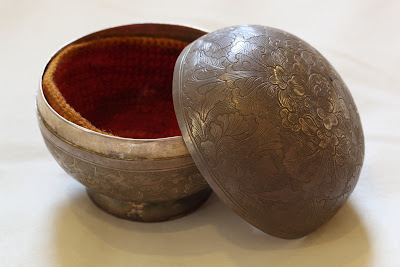 Silver cembul 1.
Silver cembul 1. Silver cembul 1.
Silver cembul 1.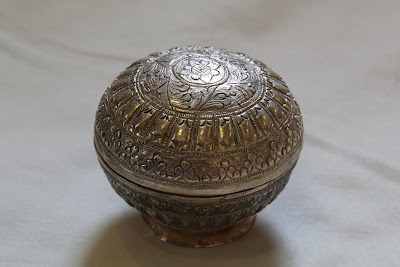 Silver cembul 2.
Silver cembul 2.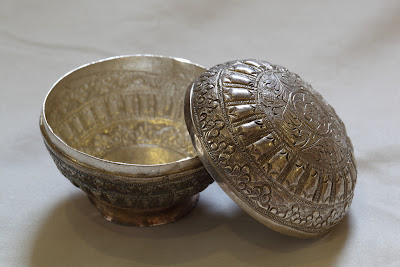 Silver cembul 2.
Silver cembul 2.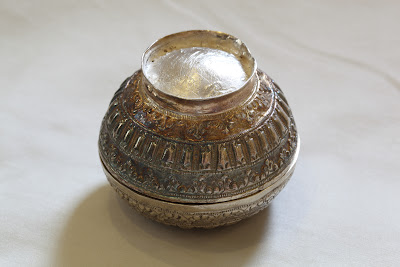 Silver cembul 2.
Silver cembul 2.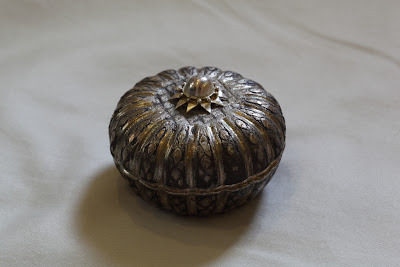 Silver cembul 3.
Silver cembul 3. Silver cembul 3.
Silver cembul 3.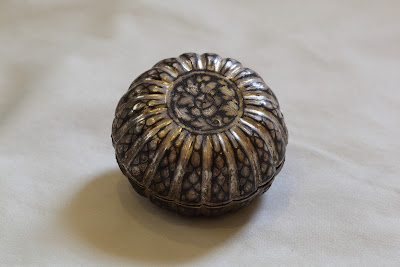 Silver cembul 3.
Silver cembul 3.There are another few items which also categorized as the betel nut paraphernalia in my previous blog. They are the "
Silver Betel / Tobacco Box", the "
Spittoons", the "
Asam Gelugor Fruit-Shaped Brass Container" and the "
Indonesian Betel Or Tobacco Box". :)
